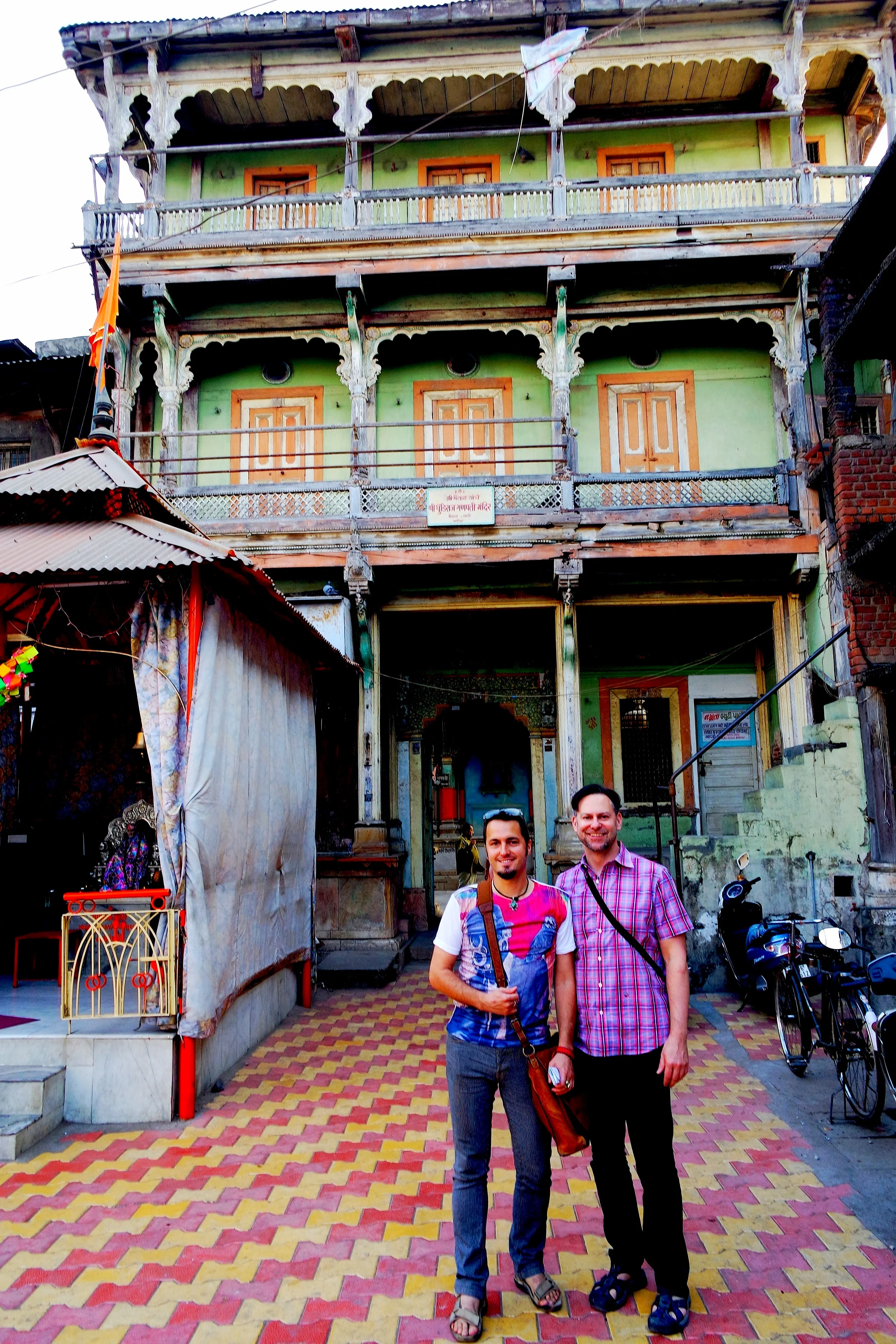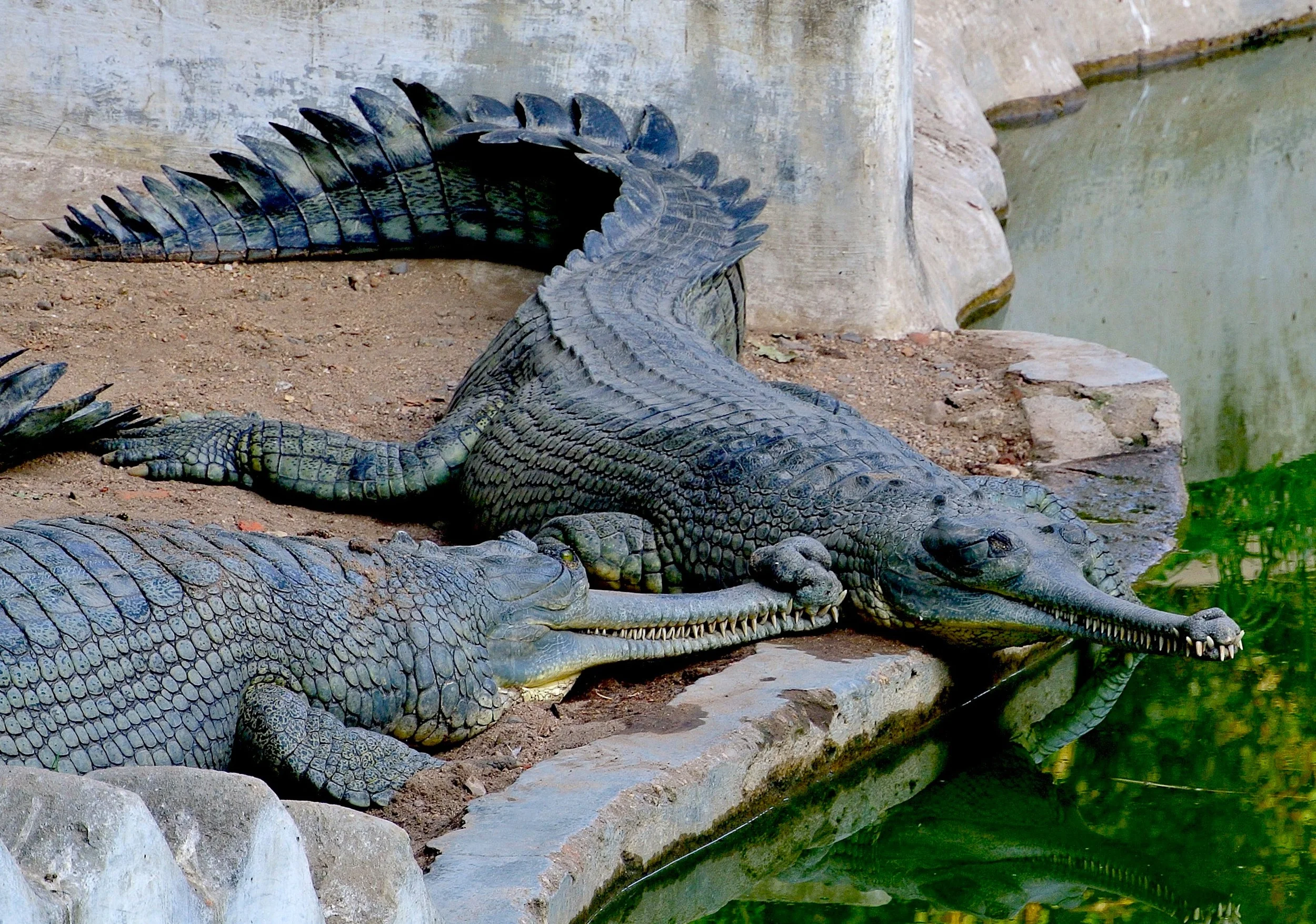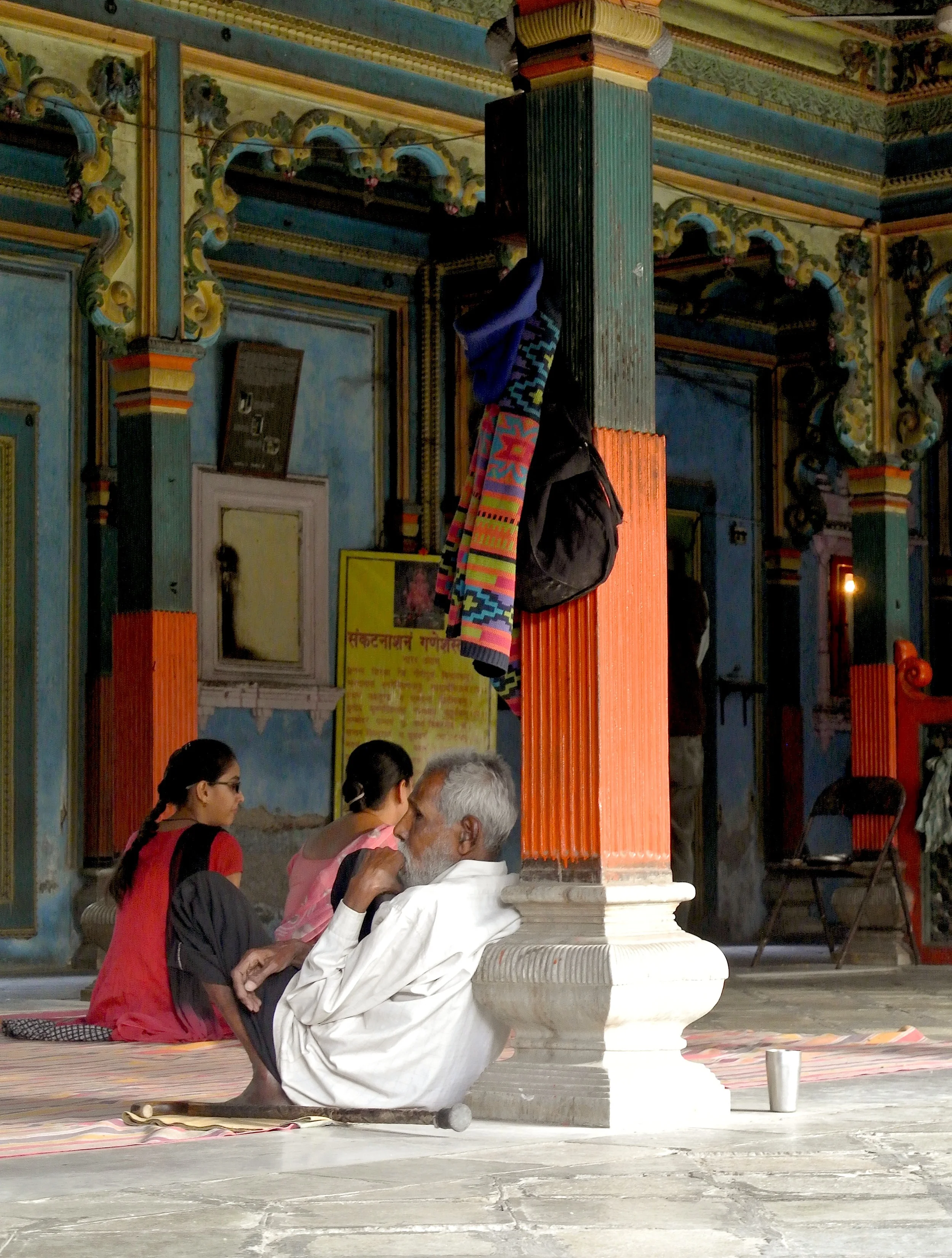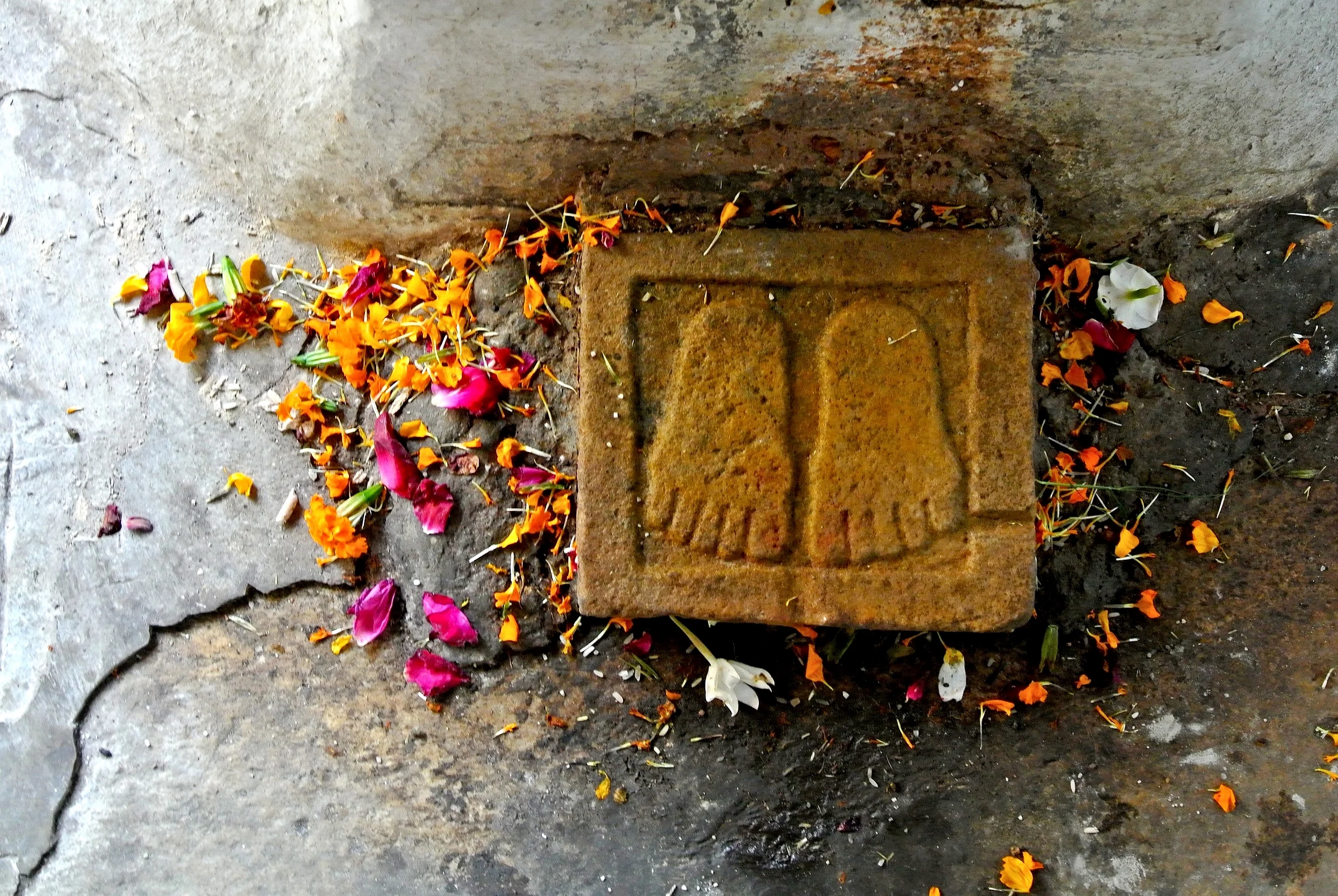Visitors leave their shoes outside the Dhundiraj Ganpati Mandir temple in Baroda, India
The zoo is a popular attraction, while the Dhundiraj Ganpati Mandir Temple could be Baroda’s best-kept secret.
At the edge of Sursagar Lake, we asked an auto rickshaw driver if he could take us to the Dhundiraj Ganpati Temple, which is located deep within the city’s old quarter.
He responded with, “OK, OK,” which George warned us is what Indians say no matter what you ask. In this case, I’d like to point out that “OK’’ didn’t mean that the driver knew exactly where the temple was. We quickly realized this, as he proceeded to get lost and stopped frequently, asking for directions, bumming a cigarette off a couple of nonplussed college students.
“Patrons looked upon the mouse deity with reverence, genuflecting and kissing its feet.”
As we made our way into the winding streets of the old quarter, we passed innumerable buildings, some crumbling, while others have collapsed into rubble.
George commented, “They don't even know how to get around their own city — but how could they?" And he’s right. Baroda’s labyrinthine lanes are as if a child imagined it, with every usable square foot of space occupied.
When we finally arrived, it turned out the Mandir was closed. Our driver got out and knocked on a doorway not far from the temple entrance to ask what time it opens. That’s not something that would have occurred to us Westerners. We would have just looked for a sign, and not finding one, would have left disappointed.
Check out the snouts on these gharial crocodiles at the zoo in Baroda
Zootopia
We had hours to kill before the temple opened, so we headed off to the zoo.
En route, we passed the Baroda Museum and Gallery. The structure was designed to resemble the Victoria & Albert Museum of London. Built in 1894, it contains a collection of art, sculpture, ethnography and ethnology.
The zoo is part of a large park called Sayaji Baug. We strolled past a small mound with a sun motif that turned out to be a clock made of flowers.
We also crossed over train tracks. The train was a gift to the children of Baroda from the Gaekwad dynasty and has since been replaced with a larger version that also accommodates adults.
Our favorite part of the zoo was the gharial crocodiles. The name originates from the Hindu word ghara, which is a clay pot with a long neck, much like their narrow snout shape. The male crocodile has a bulbous growth at the end of its snout.
Time for a Temple Run
Later that day, we returned to Dundiraj Ganpati Mandir, which was built 169 years ago. One of the city’s oldest, most cherished temples dedicated to the elephant-headed god Ganesha, it’s the only one made completely out of wood.
An intricately carved and painted door at the wooden Dhundiraj Ganpati Mandir Temple in Vadodara, India
The temple exterior is a pale green and quite dilapidated. But as you pass through the entrance doors and into a small courtyard, the temple itself appears in a lovely shade of blue.
Worshippers kiss the feet of Kroncha, a mouse deity, at a temple in Vadodara, India
The first thing we saw was Kroncha, the mouse. Instead of being in his usual spot at the feet of Ganesha, he was located atop a pedestal. Patrons looked upon the deity with reverence, genuflecting and kissing its feet. Perhaps one of the reasons he's a popular Hindu deity is that he is known as the destroyer of all obstacles. And here we thought elephants were scared of mice.
Worshippers inside a temple to Ganesha, the elephant-headed Hindu deity
The marble idol of Lord Ganesha is placed with idols of his wives Riddhi and Siddhi within the inner temple.
The Buddha's footprints at the Dhundiraj Ganpati Mandir Temple in Baroda, India
Off to the side of the temple, in a courtyard in the back, don’t miss the Buddha’s stone footprints, which were covered with scattered petals or puja, a ritual offering of flowers as a symbol of love and devotion.
The temple's not easy to get to — but it's worth the effort. –Duke


























